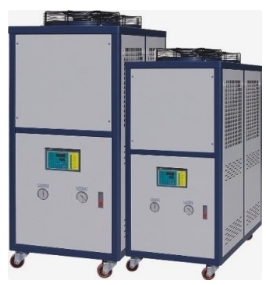- 23
- Nov
Understand the pressure range of industrial chillers when the compressor is working
Understand the pressure range of industrial chillers when the compressor is working
In daily life, we usually use two common chiller models, one is water-cooled. The other is air-cooled.
The difference between the two lies in the way the refrigerant is condensed (that is, the way of heat dissipation). The discharge pressure (that is, high pressure) of the compressor is directly related to the heat dissipation, while the suction pressure (that is, low pressure) is directly related to the temperature of the chilled water. Relationship. The pressure when the compressor stops is also proportional to the temperature, generally 10~11Kg/㎝² in summer and 8~9Kg/㎝² in winter. The compressor in the chiller is sometimes related to the weather, and the temperature is different and the pressure is different. When not working for more than 12 hours, the high and low pressures are balanced.
The low pressure of the chiller compressor is related to the temperature and flow of the chilled water. Generally, when the evaporator outlet is 7℃, the low pressure is 4Kg/㎝², and when the water outlet is 15℃, the low pressure is about 4.8Kg/㎝². At 20°C, the low pressure is about 5.3Kg/㎝². In summer with an outdoor temperature of 32℃ and good ventilation, the high pressure of the water-cooled refrigerator is within the normal range of 14~18Kg/㎝². If it exceeds 22Kg/㎝², the unit will trip and stop; the high pressure of the air-cooled refrigerator It is within the normal range of 17~22Kg/㎝². If it exceeds 28Kg/㎝², the unit will trip and stop.

